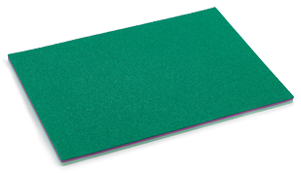Aug . 13, 2024 22:41 Back to list
Cost Analysis of Badminton Court Mats for Recreational and Professional Use
The Cost of Badminton Court Mats Factors and Considerations
When setting up a badminton court, one essential component that often gets overlooked is the flooring or mat. The surface on which players compete can significantly impact performance, safety, and even the longevity of the facility. With various options available in the market, it’s crucial to understand the cost implications associated with badminton court mats and the factors influencing these prices.
Understanding Badminton Court Mats
Badminton court mats are specifically designed to provide a suitable playing surface that meets the requirements set by organizations like the Badminton World Federation (BWF). These mats are typically made from durable materials such as PVC, rubber, or specialized composites that offer both flexibility and firmness, ensuring that players can move swiftly and safely on the court.
Standard Costs
The cost of badminton court mats can vary widely based on several factors. On average, you can expect to pay anywhere from $2 to $10 per square foot for high-quality mats. For a standard badminton court that measures 20 feet by 44 feet, this translates to a total cost ranging from approximately $1,760 to $8,800 for the mats alone. This initial investment might seem high, but it is vital to consider the long-term benefits these mats provide, including player safety and performance enhancement.
Factors Influencing Cost
1. Material Quality The quality of materials used in the manufacturing of the mats is one of the most significant cost determinants. Higher-grade materials are often more expensive but offer better durability and performance, making them worth the investment for serious players or facilities.
badminton court mat cost

2. Thickness and Density Thicker and denser mats generally provide better shock absorption and support, which can lead to a higher price. A mat’s ability to absorb impact can reduce the risk of injuries, making it a wise choice for frequent use.
3. Customization If you require custom colors, logos, or specific branding, this can increase the overall cost. Custom mats cater to schools, sports clubs, or commercial facilities that want their branding to be visible during play.
4. Installation Costs Depending on the complexity of the installation, additional labor costs may apply. Some mats are easy to install and come with adhesive backing, while others might require professional installation, which adds to the overall expense.
5. Maintenance Requirements While a lower-priced mat may seem attractive upfront, ongoing maintenance and replacement costs should also be considered. Higher-quality mats may require less frequent replacement and can be easier to clean and maintain.
Long-Term Investment
Investing in quality badminton court mats is not merely about immediate expenditure. High-quality mats can significantly improve players’ experience, offering better grip and comfort while reducing injury risks. Moreover, facilities that prioritize player safety and performance often attract more users, resulting in higher revenue potential.
Conclusion
In conclusion, the cost of badminton court mats can vary depending on multiple factors, including material quality, thickness, customization options, installation requirements, and ongoing maintenance. While the initial outlay may seem considerable, the advantages of investing in quality mats cannot be overstated. For facilities and organizations that prioritize player safety and performance, high-quality badminton court mats are an essential component of their setup, ensuring a safe and enjoyable environment for players at all levels.
-
Premium Pickleball Sport Court Solutions Durable & Customizable Courts for All Levels
NewsJul.06,2025
-
Springs Pickleball 9 Indoor Courts Available – Premier Pickleball Experience
NewsJul.06,2025
-
Durable Plastic Pickleball Court Tiles Versatile Commercial Plastic Flooring Solutions
NewsJul.05,2025
-
Optimal Height for Indoor Pickleball Court Meet Official Standards & Enhance Play
NewsJul.05,2025
-
Premium Pickleball Basketball Sport Court Tiles – Durable, Versatile, Easy Installation
NewsJul.05,2025
-
Converting Tennis Court to Pickleball Fast & Affordable Solutions for Any Facility
NewsJul.04,2025

